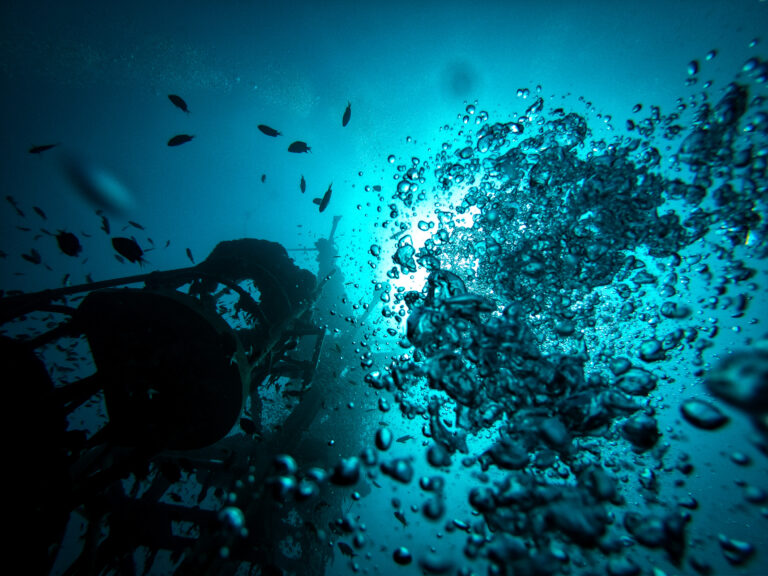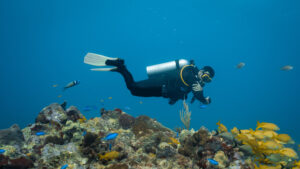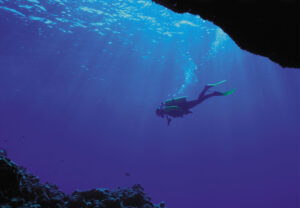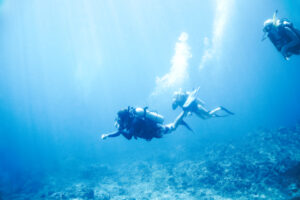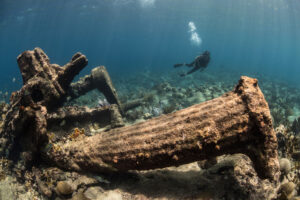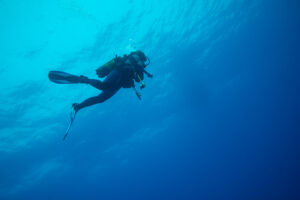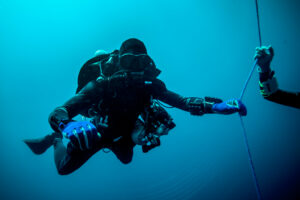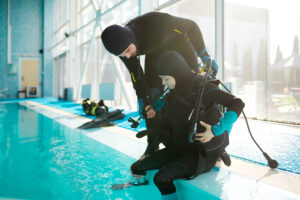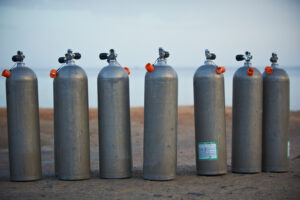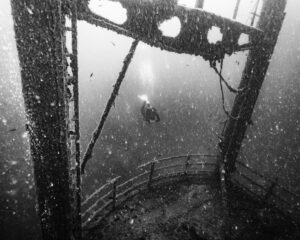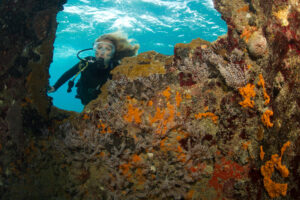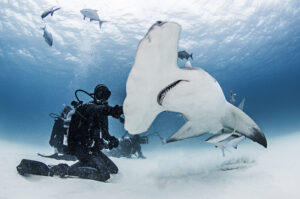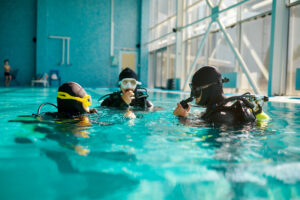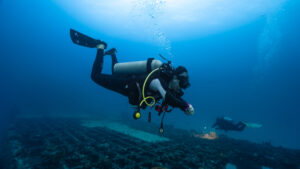What is Water Pressure when Diving?
Water pressure is a crucial concept in scuba diving, defined as the force per unit area exerted by the weight of water. The weight of the water column above a certain depth creates this pressure. This pressure is not just from the top down, but it is exerted equally from all directions. The deeper a diver descends, the greater the water pressure exerted on their body.
Measurement of Water Pressure
In scuba diving, water pressure is commonly measured in atmospheres (atm). Under standard conditions at sea level, one atmosphere is equivalent to the pressure exerted by a 33-foot column of seawater or a 760 mm column of mercury. This means that for every 33 feet (approximately 10 meters) a diver descends in seawater, the pressure increases by one atmosphere. Thus, a diver at 33 feet underwater experiences a pressure of 2 atmospheres – one from the water and one from the air above the water.
Impact of Water Pressure on Divers
Physical Effects
The increased pressure underwater affects divers in several ways. First, it compresses the air spaces in a diver’s body, such as the lungs, middle ear, and sinuses. This can lead to various conditions if not managed correctly, such as barotrauma and decompression sickness, which we will discuss later.
Second, the increased pressure affects the density of the air breathed by the diver. As the pressure increases, the air becomes denser, and the diver inhales more molecules of air with each breath. This can lead to higher levels of nitrogen in the body, leading to narcosis, a temporary and reversible altered state of consciousness, also known as “rapture of the deep.”
Equipment Considerations
Scuba equipment is designed to cope with underwater pressure changes. For example, a regulator adjusts the air pressure in a diver’s air supply to match the surrounding water pressure, allowing the diver to breathe normally at depth. Buoyancy compensators can be adjusted to offset the pressure’s effect on a diver’s buoyancy.
Managing Pressure Changes: Key Techniques and Conditions
Equalization
Equalization is a technique used by divers to counteract the pressure’s impact on air spaces within their bodies. By frequently equalizing the pressure in their ears and mask, divers can avoid discomfort and potential injuries.
Decompression Sickness
Decompression sickness, commonly known as “the bends,” is a potentially serious condition caused by the formation of nitrogen bubbles in a diver’s tissues due to rapid pressure changes during ascent. Proper ascent techniques and decompression stops can help mitigate this risk.
Nitrogen Narcosis
As mentioned earlier, increasing pressure can lead to nitrogen narcosis. Divers can mitigate this risk by limiting their depth and using alternative gas mixtures, such as trimix, that contain less nitrogen.
The Importance of Understanding Water Pressure
An in-depth understanding of water pressure and its effects is critical for scuba divers. It helps them avoid potential health risks and properly use and maintain their equipment. Divers who respect and understand the impact of water pressure can enjoy safer, more comfortable dives, and explore the underwater world with confidence. By learning and applying the principles of water pressure, divers can safeguard their health and enhance their overall diving experience.
Water Pressure and Diving Safety: Essential Practices
Knowledge of water pressure is not only essential for understanding the physical and physiological effects it can have on a diver’s body, but it also underpins several critical safety practices in diving.
Dive Planning and Execution
Understanding water pressure plays a fundamental role in planning and executing a dive. Dive tables and dive computers, which rely on the principles of water pressure and gas absorption, allow divers to calculate their maximum depth and bottom time, and plan any necessary decompression stops. Ignoring these guidelines can lead to serious diving-related illnesses.
Emergency Procedures
In emergencies, understanding water pressure is crucial. For instance, a rapid ascent can lead to a dangerous drop in pressure, causing decompression sickness. Hence, divers are trained to make a controlled ascent, which allows for the gradual release of absorbed nitrogen, avoiding the formation of potentially dangerous bubbles in the body.
Equipment Maintenance
The maintenance and operation of scuba gear are also related to water pressure. Regulators need to be regularly serviced to ensure they can withstand changing pressures and provide the correct airflow. Similarly, understanding pressure changes helps in troubleshooting equipment issues during a dive.
The Science Behind Water Pressure
Water pressure in the context of scuba diving is more than just a measurement or a rule to follow. It’s a fundamental concept that illustrates the power and force of the ocean. The science behind water pressure involves various disciplines, including physics, physiology, and engineering. By exploring these scientific principles, divers can gain a deeper understanding of their interaction with the underwater environment.
Key Takeaways
In the realm of scuba diving, water pressure is an all-encompassing force that influences every aspect of the experience. From physical and physiological effects to dive planning and safety procedures, understanding water pressure is crucial. It is this understanding that allows divers to explore the underwater world safely and responsibly. As with all aspects of diving, respect for and understanding of the environment – in this case, the pressure of the water around us – is key to a successful dive. By embracing the principles of water pressure, divers are able to safely descend into the ocean’s depths, explore its wonders, and then return safely to the surface.

